All You Need to Know About Crusty Scab on Dog and How to Deal with It

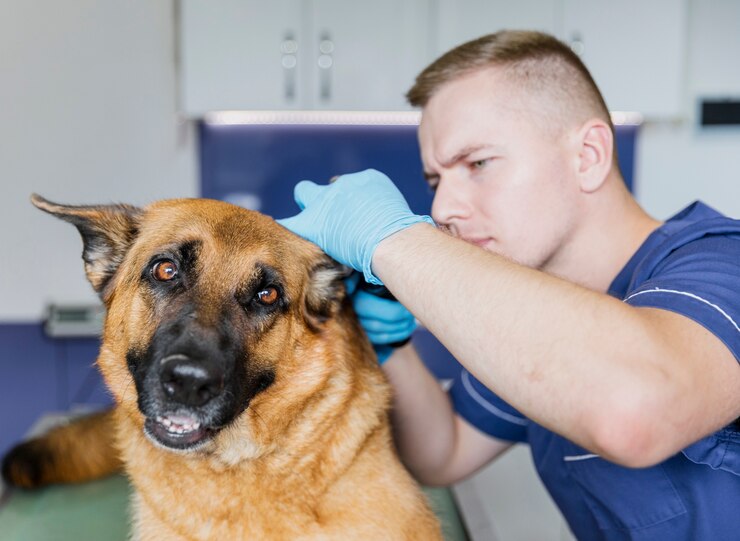
Hey Paw-rents, is there a suspicious-looking crusty patch on your pup’s skin that is making you wonder, “Uh oh, what is that?” We’ve all been there. Crusty scabs on dogs are quite common, and while they can look unpleasant, they’re not always cause for major alarm.
But of course, you want to get your furry friend feeling comfortable again. In this guide, we’ll dig into the most common reasons why dogs get these scabs and explore some easy home remedies and when to head to the vet. So grab a comfy spot on the couch, pup by your side, and let’s tackle those pesky scabs together!
What Causes a Crusty Scab on a Dog’s Skin?
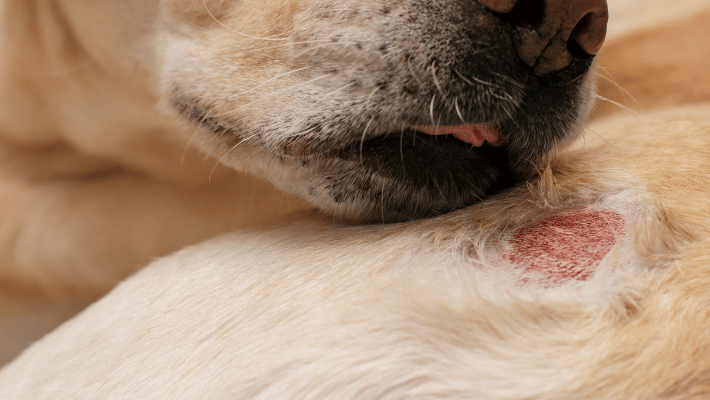
Dogs, like humans, can develop crusty scabs on their skin for various reasons. These scabs form as a natural part of the healing process when the skin is injured or irritated. Understanding the underlying causes can help you better manage and treat your furry friend’s condition.
Trauma or Skin Injury
One common cause of crusty scabs is trauma or injury to the skin. This could be due to scratches, cuts, or abrasions sustained during playtime, accidents, or encounters with other animals. When the skin is damaged, the body initiates a healing process that involves clotting, inflammation, and the formation of a protective scab.
Infection
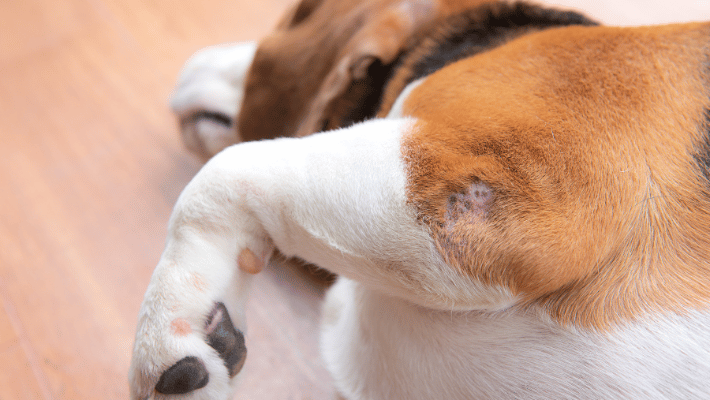
Another potential cause is skin infections, such as bacterial or fungal infections. These infections can lead to irritation, inflammation, and the development of crusty scabs. Additionally, mites like mange or fleas can infest a dog’s skin, causing intense itching and scabbing as the dog scratches at the irritated areas.
Allergies
Allergies, either environmental or food-related, can also trigger skin reactions and subsequent scab formation. Moreover, certain skin conditions, like hot spots (acute moist dermatitis) or acral lick dermatitis (excessive licking of the paws or legs), can also result in crusty scabs.
These conditions can be caused by underlying issues such as allergies, stress, or boredom. Dry, irritated skin can lead to scratching and the development of crusty scabs, especially in winter months.
It’s essential to identify the root cause of the crusty scab to provide appropriate treatment and prevent further complications. You should pay close attention to your dog’s behavior, as they may exhibit signs of discomfort or pain, such as whimpering, limping, or reluctance to move or be touched in the affected area.
When To See a Veterinarian For a Crusty Scab On a Dog
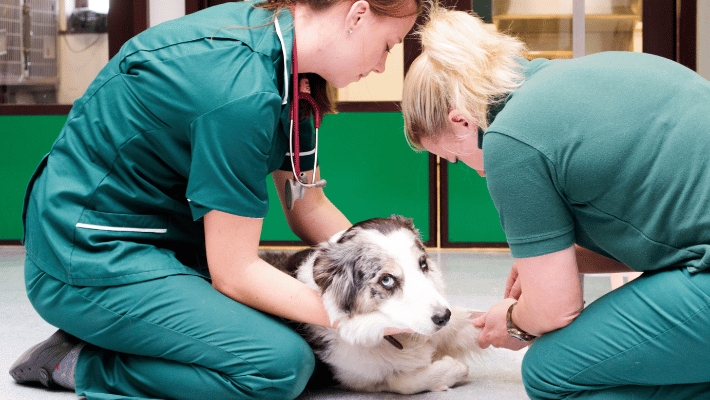
Most of the time, crusty scab is a symptom of an underlying condition in dogs. So if you notice any of the following signs, you should consult a veterinarian immediately:
- Redness or inflammation around the scab
- Hair loss or thinning in the affected area
- Itching or excessive licking/scratching
- Oozing or discharge from the scab
- Swelling or raised bumps
- Scaly or flaky skin surrounding the scab
- A foul odor emanating from the scab
- If your dog is exhibiting signs of pain, lethargy, or loss of appetite
- If the scab persists for more than a week without improvement
- If the scab keeps recurring or spreading to other areas
Your veterinarian can properly diagnose the underlying cause and provide appropriate treatment, which may include antibiotics, anti-inflammatory medications, or specialized topical treatments.
Possible Treatments For a Crusty Scab On a Dog
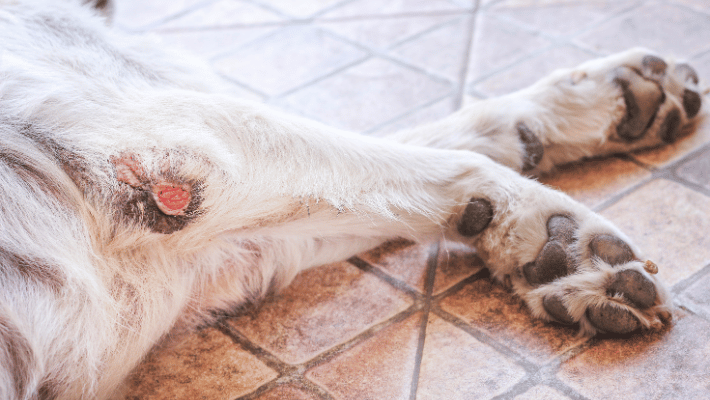
The treatment approach for a crusty scab on your dog will depend on the underlying cause and severity of the condition. Here are some potential treatment options:
- Antibiotics: If the scab is infected or caused by a bacterial skin infection, your veterinarian may prescribe oral or topical antibiotics to eliminate the infection. Some of the commonly prescribed antibiotics include Cephalexin, Cefpodoxime, and Amoxicillin/Clavulanate.
- Anti-inflammatory medications: These medications can help reduce inflammation, swelling, and discomfort associated with the scab.
- Topical treatments: Depending on the cause, your vet may recommend medicated creams, ointments, or sprays to help promote healing and prevent further irritation.
- Allergy management: If the scab is a result of an allergic reaction, your vet may suggest dietary changes, antihistamines, or other allergy treatments to address the underlying issue.
- Wound care: In cases of deep or severe wounds, your vet may recommend cleaning and dressing the wound to prevent infection and promote healing.
- Cone or protective collar: To prevent your dog from licking, chewing, or scratching at the scab, your vet may recommend using an Elizabethan collar or protective cone.
- Surgery: In rare cases, surgical intervention may be necessary to remove large or persistent scabs or address underlying conditions like skin tumors or cysts.
It’s crucial to follow your veterinarian’s instructions carefully and complete the full course of treatment to ensure proper healing and prevent complications.
Home Remedies For a Crusty Scab On a Dog
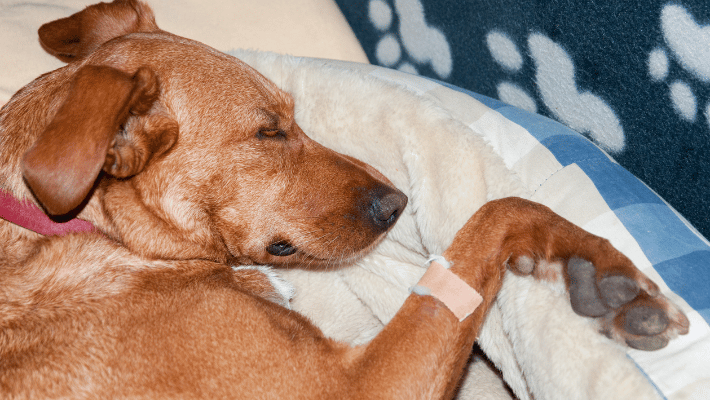
While veterinary treatment is often necessary, there are some home remedies that can aid in the healing process and provide relief for your dog:
- Gentle cleaning: Use a mild, antimicrobial soap and warm water to gently clean the affected area. This can help remove dirt, debris, and excess discharge, promoting healing.
- Oatmeal Baths: Colloidal oatmeal baths can help soothe itchy, inflamed skin and reduce the formation of new scabs.
- Coconut oil: Applying a small amount of coconut oil to the scab can help keep the area moisturized and promote healing.
- Calendula ointment: This herbal ointment has soothing and healing properties that can help with skin irritations and minor wounds.
- Epsom salt soaks: Soaking the affected area in a warm Epsom salt solution can help reduce inflammation and promote healing.
- Apple Cider Vinegar: Diluting apple cider vinegar in water and applying it to the scab can help dry it out and promote healing. But before applying, make sure that there are no broken skin or open wounds, as it may sting and further irritate the area.
It’s important to note that while these home remedies can be helpful, they should not replace professional veterinary care, especially for severe or persistent cases.
Preventing Crusty Scabs on Dogs
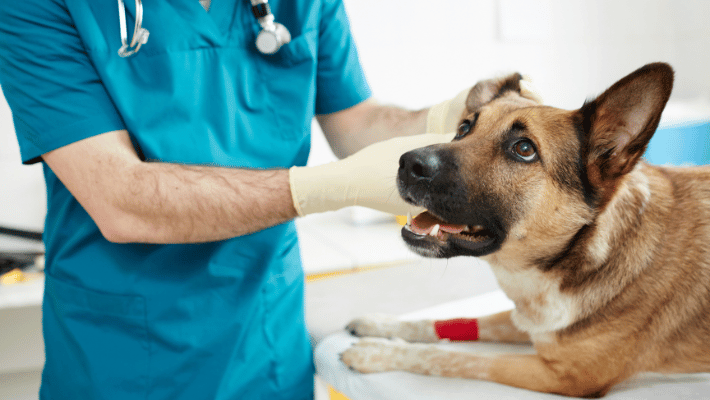
While some scabs may be unavoidable, there are steps you can take to help prevent or minimize their occurrence:
- Regular grooming: Keeping your dog’s coat well-groomed and free of mats or tangles can help prevent skin irritation and potential wounds.
- Flea and tick prevention: Regularly treating your dog for fleas and ticks can help prevent skin irritation and infections caused by these pests.
- Environmental control: Identify and address any potential allergens or irritants in your dog’s environment, such as certain foods, cleaning products, or outdoor allergens.
- Exercise and mental stimulation: Providing your dog with adequate exercise and mental stimulation can help reduce boredom and excessive licking or chewing behaviors that can lead to skin irritation.
- Proper nutrition: Ensuring your dog receives a balanced and appropriate diet can support overall skin and coat health.
- Stress management: Addressing any sources of stress or anxiety for your dog can help prevent stress-related behaviors like excessive licking or chewing.
Regular veterinary check-ups and preventive care can also help identify and address potential issues before they lead to the formation of crusty scabs.
When a Crusty Scab On a Dog May Indicate a More Serious Condition
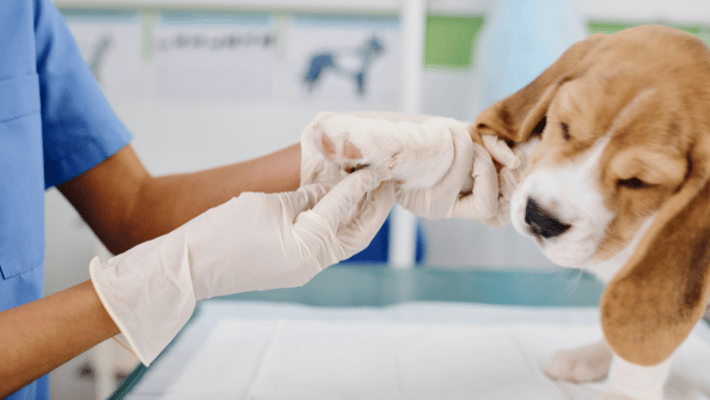
While crusty scabs are often a result of minor injuries or skin irritations, there are instances when they may indicate a more serious underlying condition:
- Autoimmune disorders: Conditions like pemphigus or lupus can cause severe skin lesions and scabbing.
- Hormonal imbalances: Hormonal disorders, such as Cushing’s disease or hypothyroidism, can lead to skin issues and impaired healing.
- Allergies: Severe or persistent allergic reactions to food, environmental factors, or flea bites can result in chronic skin irritation and scabbing.
- Skin infections: Bacterial, fungal, or parasitic skin infections can cause severe skin lesions and scabbing if left untreated.
- Skin cancer: While rare, certain types of skin cancer in dogs can present as non-healing scabs or lesions.
If the crusty scab persists despite treatment, spreads to other areas, or is accompanied by other concerning symptoms like lethargy, weight loss, or appetite changes, it’s crucial to seek prompt veterinary attention to rule out any underlying serious conditions.
How To Properly Clean and Care For a Dog’s Wound
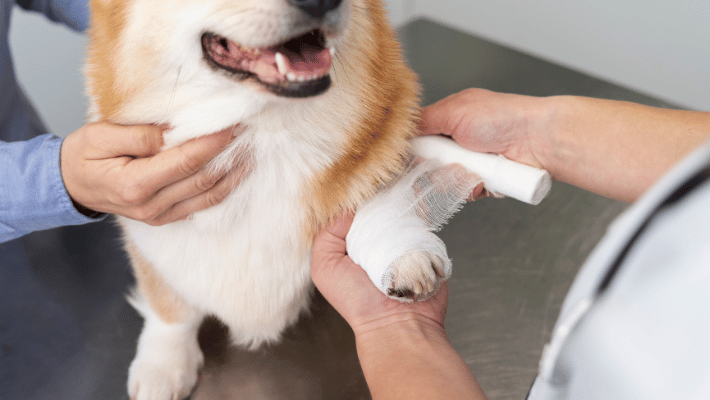
Proper wound care is essential for promoting healing and preventing further complications. Here are some steps to follow when cleaning and caring for your dog’s wound:
- Gather supplies: Have clean gauze, a mild antiseptic solution (like diluted chlorhexidine or saline), and sterile bandages or dressings on hand.
- Gently clean the wound: Use the antiseptic solution and gauze to gently clean the wound, removing any debris or discharge. Avoid scrubbing or applying too much pressure, as this can cause further irritation.
- Apply a topical treatment: If recommended by your veterinarian, apply a prescribed topical antibiotic or antimicrobial ointment to the wound.
- Bandage or dress the wound: Cover the wound with a sterile dressing or bandage to protect it from further contamination and prevent your dog from licking or scratching at it.
- Monitor for signs of infection: Watch for signs of infection, such as increased redness, swelling, discharge, or foul odor. If any of these occur, contact your veterinarian immediately.
- Change dressings regularly: Follow your veterinarian’s instructions for how often to change the dressings, typically every 1-3 days.
- Provide a cone or protective collar: To prevent your dog from licking or chewing at the wound, use an Elizabethan collar or protective cone.
- Keep the area clean and dry: Avoid getting the wound wet or allowing it to become soiled, as this can delay healing and increase the risk of infection.
- Administer medications as prescribed: If your veterinarian has prescribed antibiotics or other medications, follow the instructions carefully and complete the full course of treatment.
Proper wound care and hygiene are crucial for promoting healing and preventing complications. If you have any concerns or questions, don’t hesitate to consult your veterinarian.
Understanding The Healing Process of a Crusty Scab On a Dog
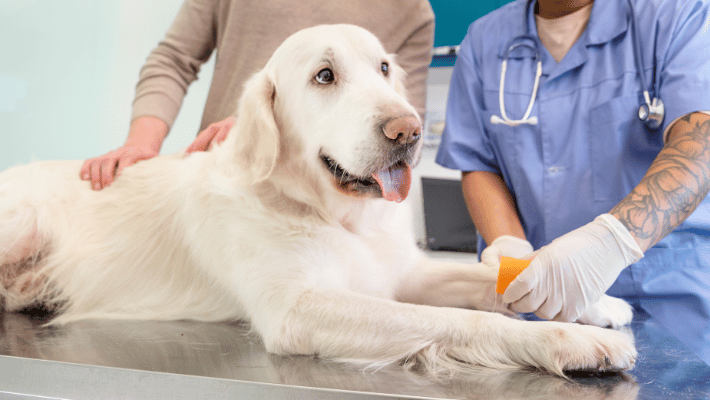
The formation of a crusty scab is a natural part of the healing process for wounds or skin irritations in dogs. Here’s a breakdown of the typical healing process:
- Injury or irritation: The healing process begins when the skin is injured or irritated, causing damage to the skin cells and blood vessels.
- Clotting and inflammation: Blood clots form to stop bleeding, and the body’s immune system initiates an inflammatory response to fight off potential infections and begin the healing process.
- Scab formation: As the wound starts to heal, a crusty scab forms over the injured area. This scab is composed of dried blood, fluid, and debris, and it serves as a protective barrier to prevent further infection and promote healing.
- New tissue growth: Underneath the scab, new skin cells and blood vessels begin to form, gradually replacing the damaged tissue.
- Scab shedding: As the new skin underneath the scab matures, the scab will eventually dry up and shed off naturally.
- Complete healing: Once the scab has fallen off, the new skin underneath should be fully healed, although it may appear slightly discolored or have a different texture initially.
The healing process can take anywhere from a few days to several weeks, depending on the size and severity of the wound or skin irritation. It’s essential to avoid picking or disturbing the scab, as this can delay healing and increase the risk of infection.
If the scab persists for an extended period without showing signs of improvement or if it becomes increasingly swollen, red, or oozes pus, it may indicate an infection or other underlying issue, and you should consult your veterinarian.
Final Thoughts On Taking Proper Care of a Dog’s Skin and Wounds
Crusty scabs on dogs are a common occurrence and often a natural part of the healing process. However, it’s crucial to identify and address the underlying cause to ensure proper treatment and prevent complications.
By following your veterinarian’s recommendations, practicing good wound care, and taking preventive measures, you can help your furry friend heal quickly and maintain healthy skin.
Remember, prompt attention and proper care are essential for managing crusty scabs and promoting your dog’s overall well-being.







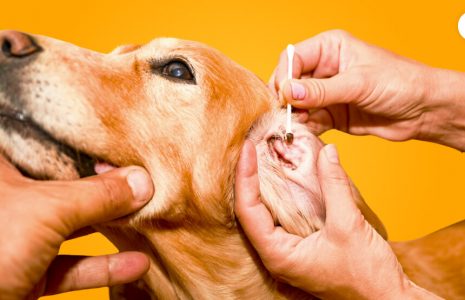

All Comments
Alex
29 June, 2024
Fantastic site. Lots of helpful information here. I am sending it to some friends. And of course, thanks for your effort!
Reply